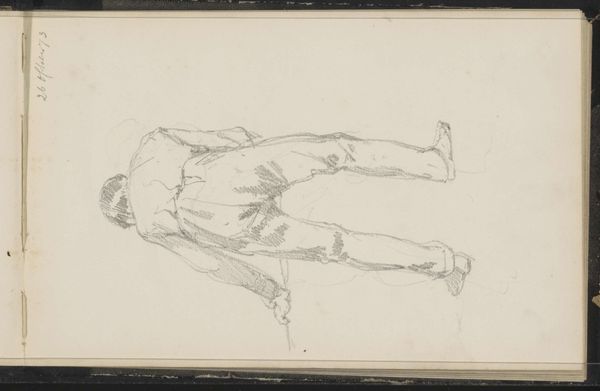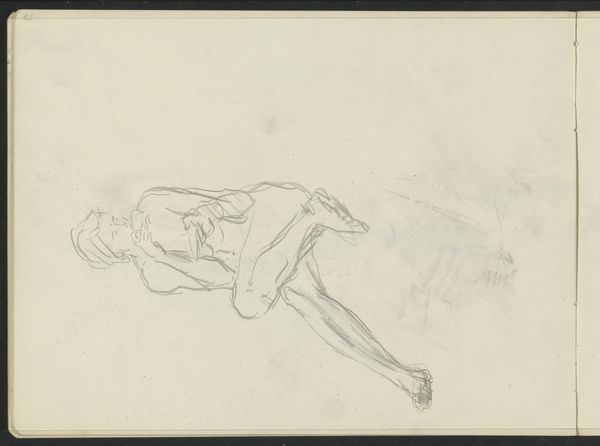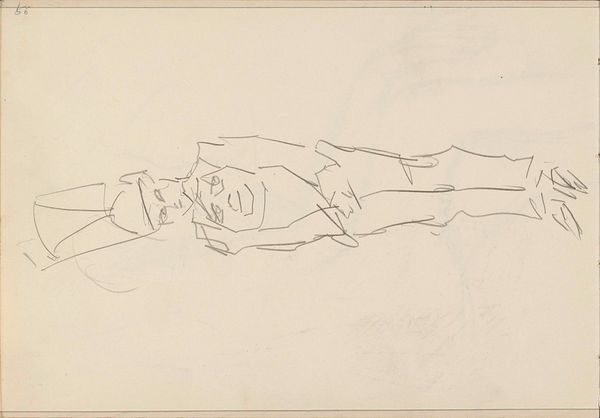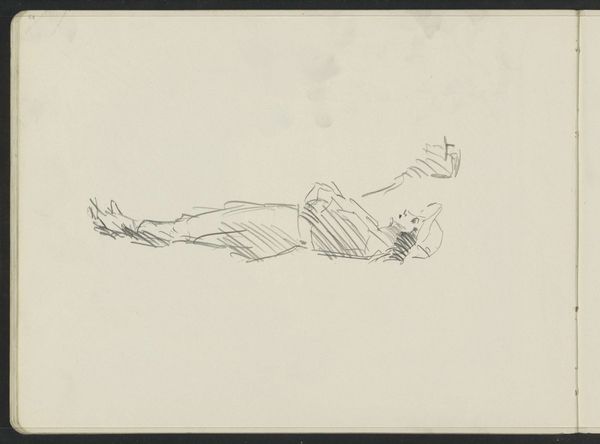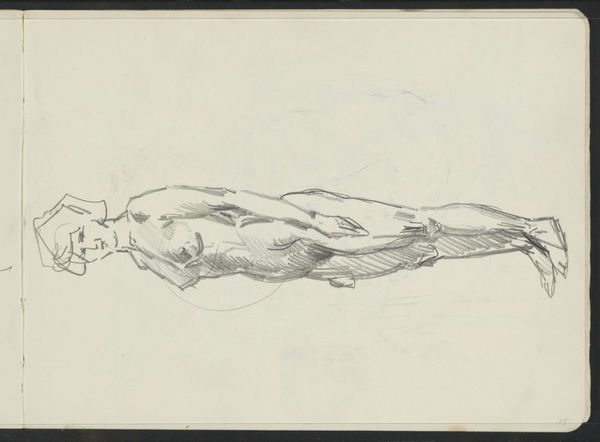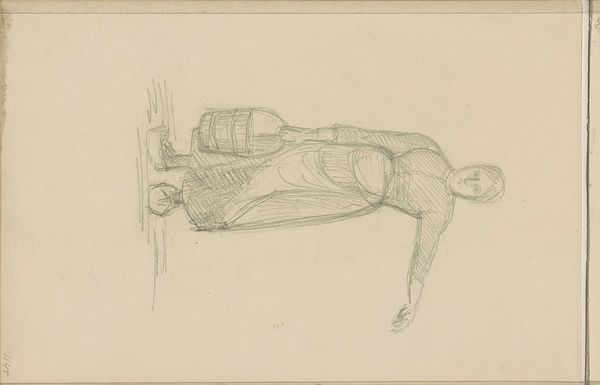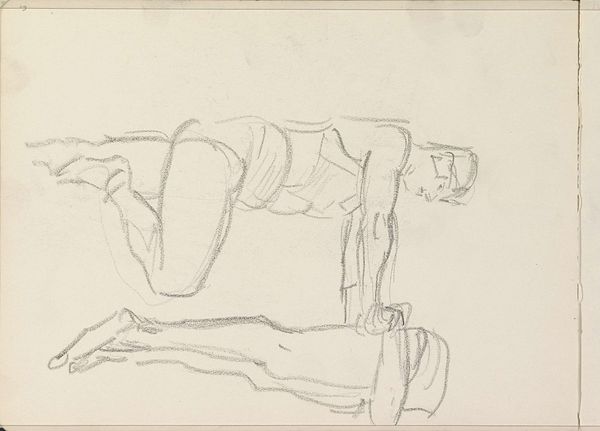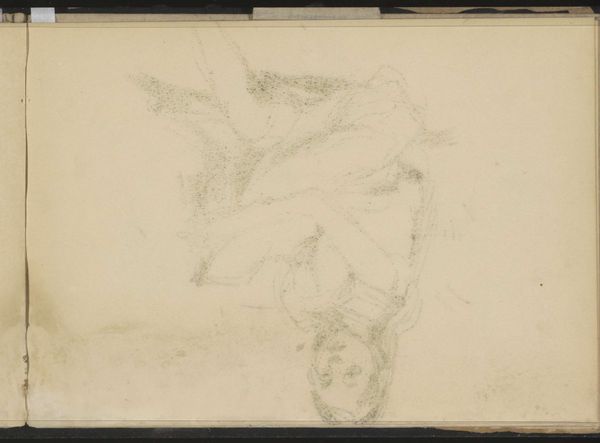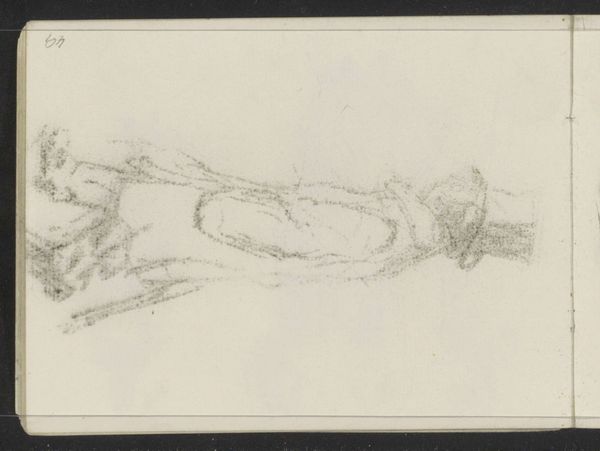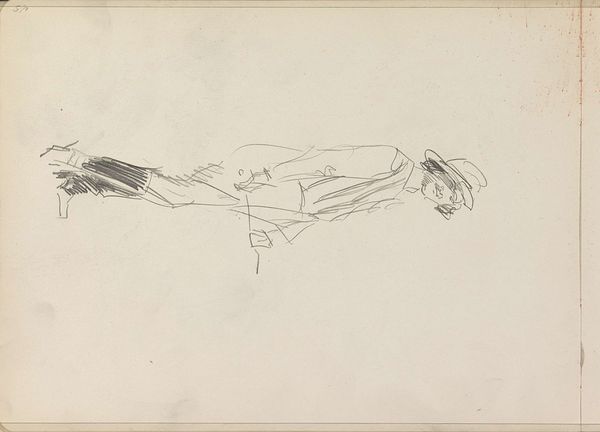
Copyright: Rijks Museum: Open Domain
Editor: Here we have Isaac Israels' "Staande man met de armen over elkaar," a pencil drawing from around 1915 to 1925, now housed in the Rijksmuseum. What immediately strikes me is the seemingly effortless capture of the male figure in this sketch-like piece. The hatching indicates three-dimensionality. How do you interpret the construction of form in this work? Curator: The interplay of line and form is indeed quite remarkable. Note how Israels employs a reductive approach. The human figure, though realistically proportioned, is distilled to its most essential components. Consider the economic use of line, particularly in delineating the contours of the limbs, each stroke possessing a definitive quality. Do you observe any tension in the drawing? Editor: There's a distinct lack of ornamentation; it’s pure form and tonal gradation created by the layering of individual strokes. I feel the pressure implied in the man pushing himself upwards. Curator: Precisely. Semiotically, the image operates as an index of the artist's hand. The sketch carries a palpable immediacy and presence, highlighting not just the depicted figure but the act of artistic creation itself. Consider how different a reading one might derive if the same figure were rendered in bronze or marble. Editor: It would drastically change the effect, removing that feeling of spontaneity. Curator: Yes, the material qualities are critical. The choice of pencil on paper, allows for erasure and alteration. It underscores a process of continuous refinement and decision-making. Do you agree? Editor: I agree wholeheartedly. I see how Israels invites us to appreciate the beauty of form and line, liberated from superfluous detail. Curator: A worthy observation. This artwork really does show how formal choices alone can carry a deep sense of aesthetic value.
Comments
No comments
Be the first to comment and join the conversation on the ultimate creative platform.

